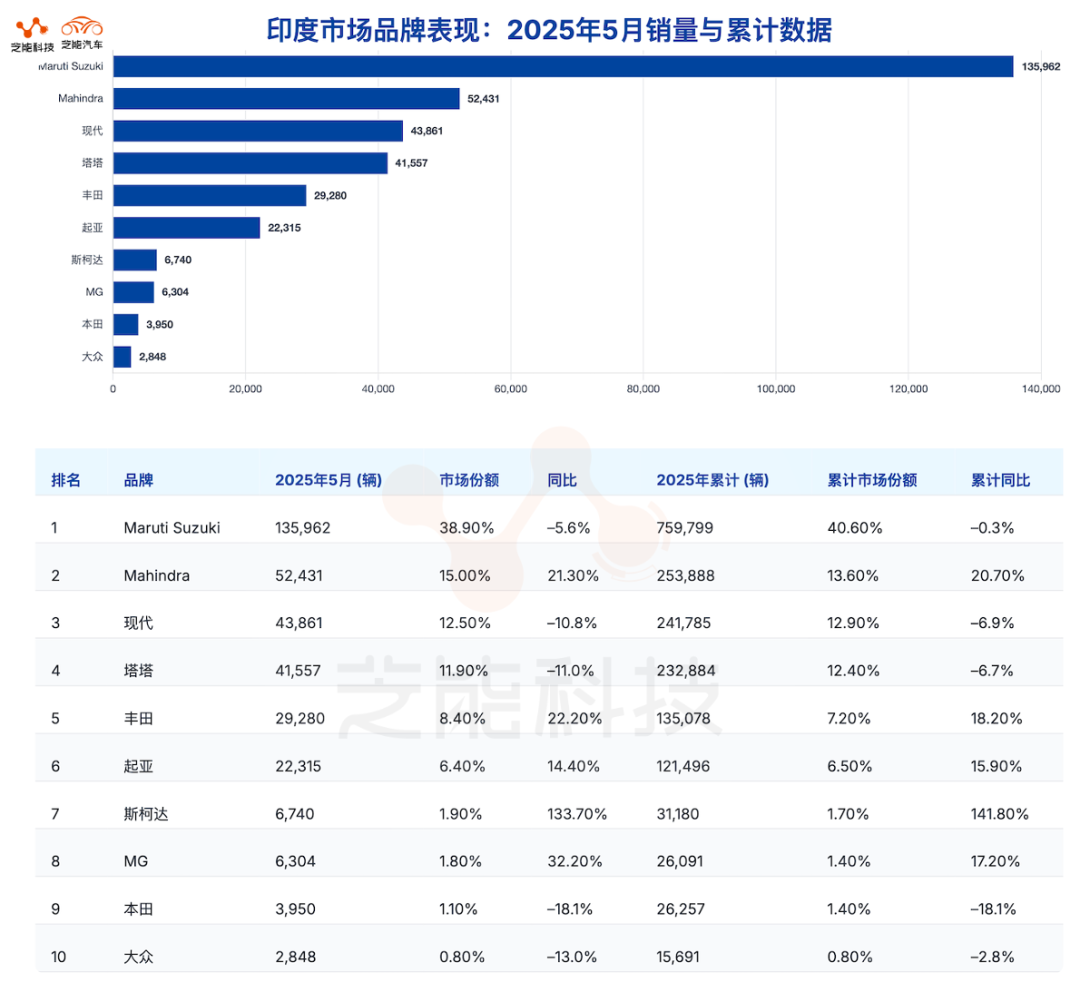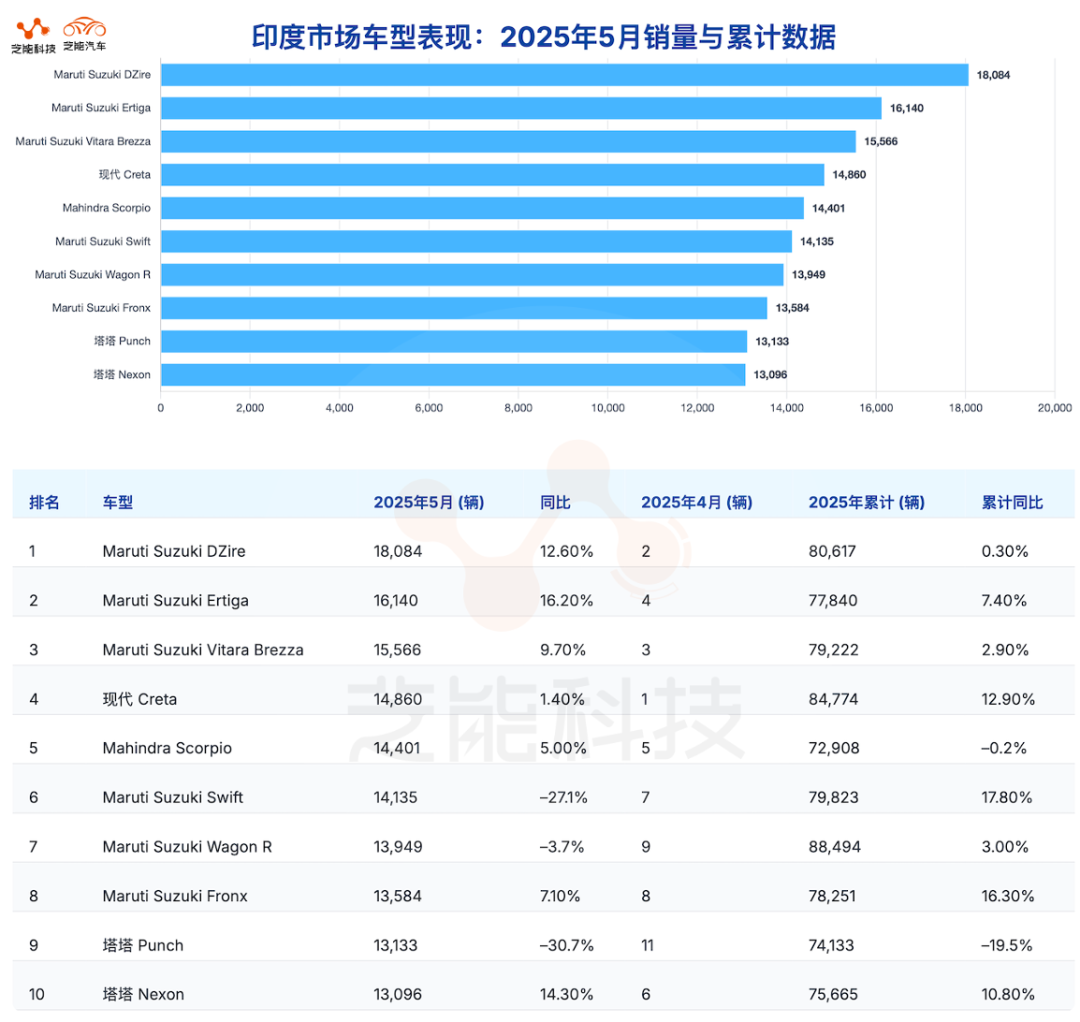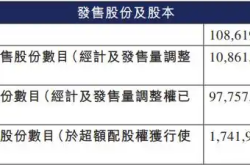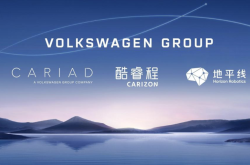Asian Auto Market | India May 2025: Auto Sales Reach New High for Three Consecutive Months
![]() 06/23 2025
06/23 2025
![]() 491
491

In May 2025, India's light vehicle market witnessed a slight annual increase, with 349,700 units sold, marking a new historical high for three straight months.
The market leader, Maruti Suzuki, experienced a decline in market share, while Mahindra & Mahindra and Toyota emerged as strong contenders. Niche brands like Skoda and MG Motor surged, gradually altering the competitive landscape.
The frequent launch of new models is also leading to a reshuffle among top sales performers, signifying that product strength has become the market's dominant force.
01
Structural Adjustment Behind Stable Sales
On the surface, Indian light vehicle sales in May amounted to 349,713 units, a mere 0.2% increase from the previous year.
This performance presents a paradox: while sales figures hit a new high, they failed to demonstrate a corresponding growth momentum, creating a "growth gap" amidst India's vast population and emerging middle-class consumer group.

Amidst stable sales, leading brands' market shares fluctuated significantly.
◎ Maruti Suzuki remained at the forefront with 136,000 units sold but experienced a year-on-year decline of 5.6%, with its market share dropping from 40.6% at the start of the year to 38.9%. As the long-standing market leader, it now faces increasing pressure.
◎ Conversely, Mahindra & Mahindra saw a year-on-year increase of 21.3%, not only maintaining its second position but also nearing its monthly sales peak of 52,000 units. This automaker, previously known for its multi-purpose vehicles and SUVs, is rapidly expanding its user base through a more precise product strategy.
◎ Hyundai and Tata also performed unsatisfactorily, with declines of 10.8% and 11%, respectively. Amidst constant market disruption by new entrants, these two mainstream companies face challenges to their market shares.
◎ In stark contrast, Toyota's strong rebound was particularly noteworthy, with a year-on-year increase of 22.2%, resulting in May sales of 29,280 units—the second-highest in history, surpassed only by last July's level. This success is fully attributed to the continuous growth of hybrid models and the enhancement of its brand image.
Beyond the ups and downs of leading enterprises, the robust growth of second-tier brands is also worth mentioning.
◎ Skoda increased by 133.7% year-on-year;
◎ MG Motor grew by 32.2%;
◎ Kia increased by 14.4%.
This indicates that niche brands are carving out their own market segments and opening up new opportunities with innovative products and differentiated positioning. Notably, Skoda's May sales surged to 6,740 units, gradually emerging from a prolonged downturn.
02
Product Strength Drives Market Dynamics
New Cars Reshape Consumption Trends
At the model level, the restructuring of the top sales list reflects consumers' heightened sensitivity to product updates and increasingly diversified needs.

◎ Maruti Suzuki DZire reclaimed the top spot after four years, with a 12.6% increase. This change was not coincidental; after product iterations, the model's overall cost-effectiveness, fuel efficiency, and interior configuration were improved, catering to the core needs of current mainstream family users.
◎ The consistent performance of Ertiga and Vitara Brezza also helped Maruti Suzuki maintain its top three position.
◎ In contrast, although Hyundai Creta remained in second place (cumulative ranking), its growth was minimal at 1.4%, indicating that its product life cycle is nearing a bottleneck, making it difficult to sustain its previous explosive growth.
◎ Mahindra Scorpio continued to rank fifth, maintaining its popularity in the multi-purpose vehicle market. Significant growth in models like Thar and XUV700 further solidified Mahindra's appeal in the rugged off-road and urban SUV segments.
◎ On the Tata side, only Nexon made it into the top ten with a 14.3% increase, while other models like Punch and Altroz saw significant declines. Maruti Suzuki's Fronx, with monthly sales of 13,584 units and a year-on-year increase of 7.1%, demonstrated the effectiveness of new products in stimulating sales.

The influx of new models is also on the rise. From Skoda Kushaq, MG Windsor to Kia Syros and Tata Curvv, these new models have quickly gained market recognition, with their sales rankings swiftly ascending to the top.
Product diversification and design innovation are becoming critical breakthrough points for automakers to acquire new users. From the perspective of new model introduction strategies, the Indian market is focusing on compact SUVs, crossovers, and multi-purpose vehicles.
Consumers' demands for spaciousness, versatility, and overall cost-effectiveness make these models more adaptable to the market. Even the Japanese brand Toyota has achieved impressive performance in this segment through its hybrid system and models like Innova and Hyryder.
Summary
The essence of the Indian auto market has shifted from "quantitative growth" to "qualitative competition." Maruti Suzuki is losing some of its traditional advantages, while Mahindra & Mahindra and Toyota are occupying high ground with product portfolios that are more aligned with new consumption trends. Brands such as Skoda, MG Motor, and Kia are opening up new opportunities in niche segments, steering the market towards a more decentralized and open competitive landscape.








